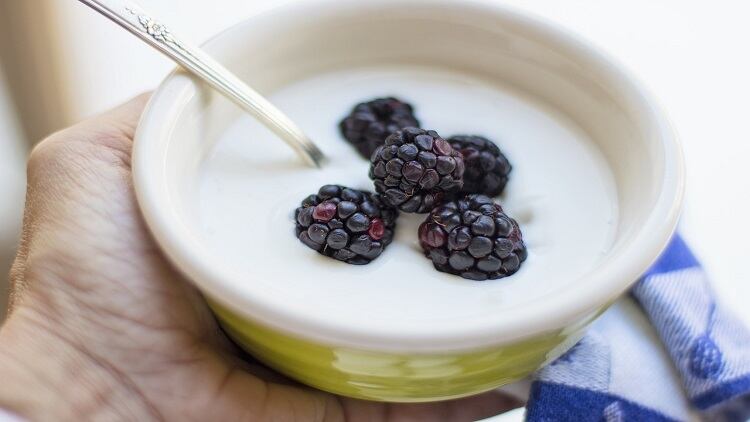The new brands GellaneerTM , ClariXanTM , and XanTremeTM are introduced today (Jan 15).
GellaneerTM is the brand name for the firm’s gellan gum offerings, while the ClariXanTM and XanTremeTM are the brand names for the firm’s xanthan gum offerings.
The main purpose of the branding exercise is to help customers better identify the types of solutions needed, Bernard Cheung, Director of Global Strategic Marketing at the firm told FoodNavigator-Asia.
For its gellan gum portfolio, the firm first entered the market about five to six years ago. It has since developed the use of gellan gum in dairy products, plant protein beverages, drinkable jellies, sports nutrition formulations, and elderly foods.
When it comes to the use of gellan gum in dairy products, the firm’s clients include Chinese dairy giants. Specifically, gellan gum is used in the production of their ambient yogurt products, such as Ambrosia from Yili.
Gellan gum is also used in the making of drinkable jellies.
“Gellan is the most commonly used hydrocolloid for drinkable jelly applications, which are extremely popular in Japan. Our gellan is used by most producers of drinkable jelly products in Japan, such as Morinaga’s Weider,” Cheung pointed out.
Due to its protein stabilising effect, gellan gum is also used in plant protein beverages. Danone’s Whitewave is an example which uses gellan gum for product stabilising purposes.
In addition to the above applications, Cheung said that gellan gum was increasingly used in a range of confectionery applications such as UHA candies and Mentos.
“The use of gellan gum has accelerated in recent years due to the unwholesome image of carrageenan due to its carcinogenic concerns and testing,” he said.
As for xanthan gum, the firm provides the ingredient for a wide range of uses, including food, personal care products, and industrial applications.
Specifically, ClariXanTM is the brand name of xanthan gum used in food and personal care products, while XanTremeTM represents xanthan gum for use in industrial purposes, such as oil drilling and extraction, concrete systems and completion fluids.
“The additional of xanthan gum to our portfolio is very recent, starting only in October 2017, after the acquisition of a facility in northern China. Since the acquisition, we had spent approximately nine months upgrading the facility and so it is only recently that production has recommenced, so it will require time to ramp up production and then sales,” Cheung said.
Addressing IP theft
Besides helping consumers identify solutions, the secondary purpose of the branding exercise is to tackle any unauthorised use of the company’s name.
There has been instances of unauthorised use of DSM Rainbow, which is the name of the company’s biogum facility.
DSM Rainbow was previously named Inner Mongolia Rainbow Biotechnology before it was acquired by DSM and Zhejiang Haixing.
“There were some cases where during the early stages of integration, there were staff from the company that was acquired that took this as the opportunity to earn some pocket money themselves. We have took necessary internal action against these persons,” Cheung elaborated.
Besides changing packaging and signage at its two biogum facilities, namely DSM Zhongken and DSM Rainbow, the company’s legal team is also in the process of preparing action against these individuals.
“We are confident that this will help prevent confusion where product has been found on the market sold outside of DSM’s authority but used the name DSM Rainbow,” the firm also said in a media announcement.
While standardising the brand image is useful, the company also understands that this may not be able to mitigate the risks completely, and thus, conversations with customers remain crucial.
“We also accept that given our strong brand name and expertise in gellan gum, there will always be the risk of people wanting to use our packaging and brand without our permission or knowledge. But we will continue to be vigilant and do our utmost best to limit the negative impact of this on our quality and ability to serve customers,” Cheung said.
Plans for China
For its business in China this year, the firm will focus on developing food applications that come with cross-segment appeals.
The firm aims to “explore adjacencies of interest” and “develop concepts that share cross-segment appeals”, according to Cheung.
An example of such a cross-segment product is UHA candies added into drinkable yoghurts.
This is a contrast from the past efforts. In the previous years, the firm focused on providing hydrocolloid solutions for dairy and plant protein products in China due to the high demand for these products.
On the other hand, biogums, produced from fermentation process, will be a key focus for the company due to its functional benefits, the company's expertise in fermentation, and sustainable supply of raw materials.
An example of its functional benefits is its ability to reduce sugar and fat contents while maintaining the mouthfeel of yogurt products.
"Specifically in relation to the Chinese business, for 2019, given the DSM network and the versatile functionality of biogums, it’s clean label, natural, organic compliance, stable price and supply reliability, we will continue to develop assist our customers develop further applications using biogums as a key focus.
“Biogums are well placed to help our F&B manufacturers in meeting a range of their key purchasing criteria such as consumer receptiveness, market trends, technical, price, and supply requirements.
“We have in our pipeline many novel biogums being developed that can help our customers in seeking new hydrocolloids that have superior functionality, stability yet do not suffer from the supply pressures brought upon by climate change as seen in the case of locust bean gum and Arabic gum.”




